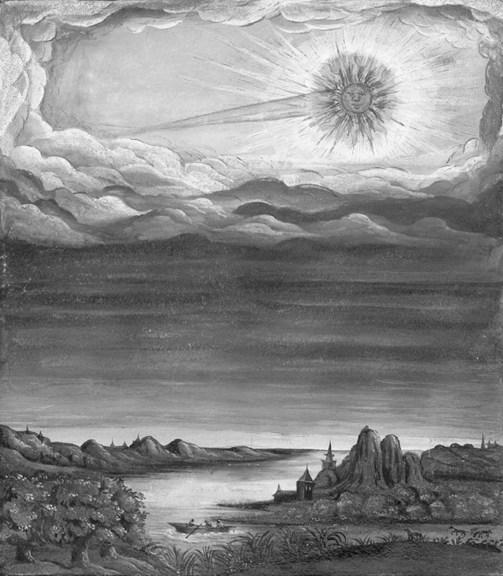By Louise Miller

Comets were as fascinating in the 18th century as they are now. Although Edmon Halley’s work on comet orbits in 1705, coupled with the work of Isaac Newton, set a whole new definition for comet activity, there was a lot less information available to the average person at the time on this celestial activity. Lack of information did not equal lack of interest, and historical diaries demonstrate close observations of comets in the 18th century. Offered in this article are two recorded sightings: one by Rev. Parkman, who lived on the Eastern side of Massachusetts (the District of Maine was still part of Massachusetts at the time), and the other by Abner Sanger in Ashuelot (now called Keene), New Hampshire.
Reverend Ebenezer Parkman of in Westborough, Massachusetts recorded in his diary:
“January 1. (1744)…The Thoughts and Conversation of People Seem to be very much engross’d by the Appearing and Continuance of the Comet in the West. I think it the Largest that I have ever Seen, and that it comes Nearer and Nearer to the Earth. I desire it may put me in Mind of the Greatness, Glory and Power, and the wisdom and So great Dominion of the Infinite God whose works these are…
January 27. Letter from Brother Samuel Parkman. N.B. his wife distracted about the Comet.
February 2. …The Comet appears larger, the Steam from it much greater than a Month agoe.
February 8. …The Comet large yet.
February 13. The Comet almost disappears in the Evening but I expect it may be Visible in the Morning.
March 2. I understand the Comet has not been Seen for Some Dayes.”
Quotes taken from The Diary of Ebenezer Parkman, 1703-1755, pages 89-92
The Great Comet of 1744 was making a great stir among the scientists in England and Europe. To the scientists one of the starling features of this comet was that it had not one tail, but several. References vary, yet six to seven tails are most frequently cited.
Later in the 18th century, Abner Sanger was living in southern New Hampshire when he recorded what he believed to be a comet.
“May 13 (1778) Forenoon I help Benjamin Willard load rails to carry to Gilmore’s to fence Gilmore’s garden… Comet in air. …While I was putting up the bars Rhoda sees a comet in the air. She calls me to see it. I look and see it all in a blaze of considerable length.”
Quote taken from Very Poor and of a Lo Make, Journal of Abner Sanger, p.197
Lois Stabler, Editor of Very Poor and of a Lo Make, Journal of Abner Sanger, noted that a comet at that date is not recorded, and suggested that Abner may have actually seen a fireball, or a bright meteor.
The big story for 1778 happenings in the sky was the Solar Eclipse of June 24th. Abner noted it with the following:
“24 Morning thick, dark. …This forenoon the sun is in a great eclipse.”
Quote taken from Very Poor and of a Lo Make, Journal of Abner Sanger, p.197
Elizabeth Drinker of Philadelphia wrote:
“24 The Sun was eclypts’d this Morning 11 ½ Digets, almost toutal (total), it was not so obscure as I expected.”
The Diary of Elizabeth Drinker, p. 312
Elizabeth had some knowledge of sun science, as a digets is defined as one-twelfth the diameter of the sun or moon.
As you marvel over the Green Comet in this month’s sky, you are joining generations of people fascinated with comet activity.

 Newsletter
Newsletter Join LCHA
Join LCHA Donate Now
Donate Now